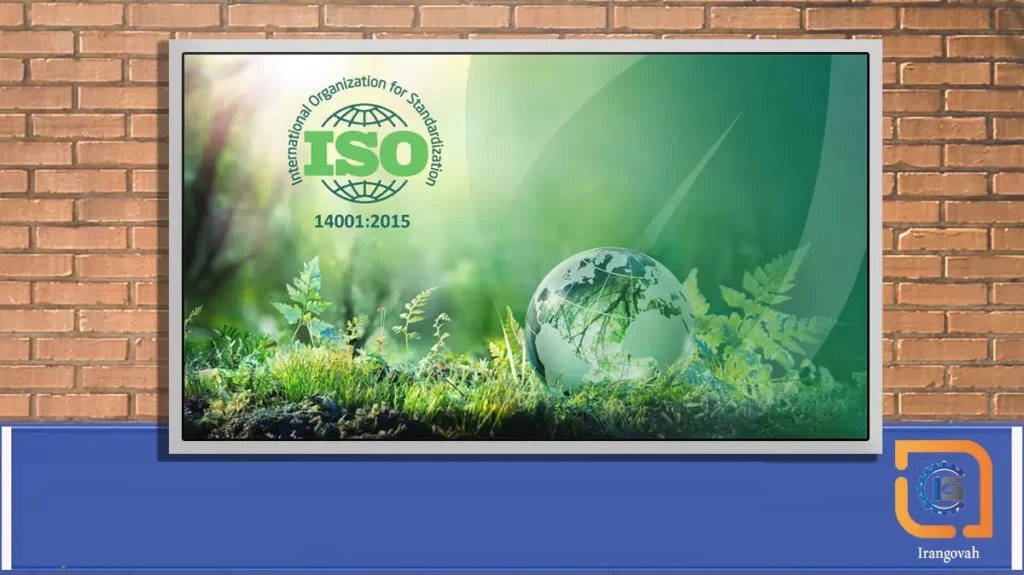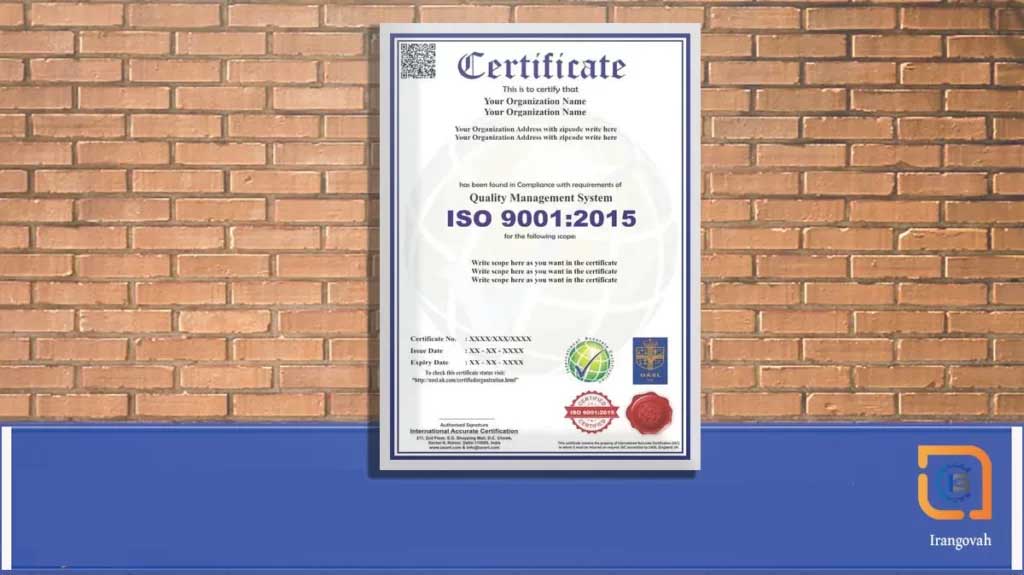What is ISO 14001 certification? Conditions, cost
What is ISO 14001 certification? ISO 14001 is an international standard on environmental management systems developed and published by the Organization for Standardization (ISO).

ISO 14001 is an agreed standard that specifies the requirements for an environmental management system. It helps organizations improve their environmental performance through more efficient use of resources and reduced waste, gaining competitive advantage and stakeholder trust.
What is ISO 14001?
The ISO 14001 standard is an international standard for environmental management systems (EMS) and codifies the most widely used environmental management requirements. Organizations whose activities are related to the environment request ISO 14001 certification to ensure their commitment to implementing environmental management system requirements and preventing environmental pollution.
In the latest statistics of the ISO International Organization, we can see that since 2020, the request to obtain ISO 14001 has increased by 5.5%. So far, more than 360,000 ISO 14001 certificates have been issued to businesses and companies by the ISO certification authority.
ISO 14001 is the main management system standard that specifies requirements for the formulation and maintenance of an EMS. This helps you control your environmental aspects, reduce impacts and ensure legal compliance. Studies show that 70% of all office waste can be recycled. However, only 7.5% reaches the recycling center.
General guidelines on principles, systems and support techniques related to ISO 14004 with ISO 14001 (Environmental Management System) standard. Therefore, ISO 14001 is part of the large family of ISO 14000 standards. This standard covers issues such as establishing, implementing, maintaining and improving EMS.
Almost any business can benefit from ISO 14001 certification. The certification is broad enough to provide significant benefits to organizations in any industry or sector, while still providing a specific framework for implementing relevant sustainable practices.
What is ISO 14001 certification?
ISO 14001 certification guarantees the commitment of organizations to the implementation of the environmental management system (EMS). By obtaining the ISO 14001 certificate, you can show your active commitment to the environment and nature, and as a result, benefit from many competitive advantages.
ISO 14001 certification guarantees the commitment of organizations to the implementation of the environmental management system (EMS). By obtaining the ISO 14001 certificate, you can show your active commitment to the environment and nature, and as a result, benefit from many competitive advantages.
By obtaining ISO 14001 certification, organizations ensure that they review and implement requirements such as identification, management, monitoring and control of environmental processes.
Issuing ISO 14001 certification is possible for all organizations, regardless of the size or type of activity, including private, public, non-profit and private.
With the full implementation of ISO 14001 standard documentation and receiving ISO 14001 certification, companies and organizations are required to examine environmental issues related to their work processes such as waste management.
What are the benefits of ISO 14001 certification?
The advantages of obtaining the ISO 14001 certificate are as follows.
- Reduce your waste.
- Manage your waste.
- Reduce your expenses.
- Create a competitive advantage to enter international markets.
- You comply with legal requirements.
- Increase reputation among consumers and partners.
- You are approved by government bodies and employers.
- enter tenders and get maximum points.
- Increasing the monitoring performance of work processes and thus reducing the risk of fines for non-compliance with environmental laws.
- Improving environmental performance.
- Improving internal management.
- Increasing social responsibility.
What are the six important elements of ISO 14001?
The six important elements of an EMC according to the ISO 14001 standard that are required for its implementation are as follows.
- Environmental policy that clearly outlines the policy.
- planning.
- Performance.
- Study and correct.
- Management review.
- Continuous improvement.
ISO 14001 standard documentation can be implemented simultaneously with ISO 9001 standard (quality management system). Therefore, in order to integrate and save time and money, it is suggested that applicants receive ISO 14001 and ISO 9001 certificates at the same time.
What documents are required to obtain ISO 14001 certification?
Organizations need to document the implementation of environmental management system (EMS) requirements to obtain ISO 14001 certification. The necessary documents to obtain the ISO 14001 certificate are as follows.
Define the scope of the company’s activity
Define the scope of activity, work processes, sites, departments and work units that your EMS covers.
Define your policy
The environmental policy briefly describes your organization’s commitment to accept responsibility for impacts on the wider environment and any legal requirements. This policy includes a clear commitment to prevent pollution and to continuously improve the way your business seeks to meet its environmental goals.
Environmental policy
An EMS-related environmental policy includes a clear commitment to preventing pollution and continuously improving the way your business seeks to meet its environmental goals.
Document environmental risk and opportunity assessments
ISO 14001 describes and acknowledges the environmental risks and opportunities that an organization may face. They will include risks in unusual and emergency situations. It also includes opportunities to embrace environmental change and improvement.
Documentation related to the assessment of environmental aspects
Environmental aspects are activities that affect the environment. Because every business consumes materials, uses energy, and produces waste in business operations, environmental impacts occur as a result. Example(s) of environmental aspects include:
- Use of water, electricity, gas, etc.
- Waste production
- Emission of gas, smoke and soot
- Domestic or industrial waste disposal
- Management of activities with the potential to cause pollution such as bulk oil storage tanks
Once you have identified these environmental aspects, you must determine the impact they could have on the environment and, using a “risk” scoring system, identify the aspects that are most important.
Environmental goals and planning to achieve them
Your organization should have clear environmental goals and a clear plan for how to achieve those goals. The results of the “risk” scoring of environmental aspects can help the business prioritize activities that would benefit from monitoring. If possible, goals should be measurable. Examples of common environmental goals include:
- Record monthly electricity consumption in kilowatt hours.
- Registration of monthly waste production.
Document your operational control procedures
ISO 14001 requires organizations to define and implement their operational controls in a manner appropriate to the sector in which they operate. Your operational controls ensure that:
- All legal and compliance requirements are met.
- Environmental goals have been evaluated and determined.
- Internal, external and outsourcing processes are defined.
- Any training requirements are assessed, implemented and reviewed.
Prepare emergency response documentation
Emergencies can be conditions that arise in your organization that affect the environment or environmental events that affect your organization. You must demonstrate that your organization can respond to each of them.
Prepare documentation for stakeholders
Stakeholders are those without whom the business would not be able to operate. Who we choose to work with affects the organization’s impact on the wider environment. The needs and expectations of interested parties should be considered in the management system.
Registration of training records of personnel
Your organizational personnel may need new training. Recording the training and competency levels of each member of your organization makes it easier to track any required skill upgrades. It will also help demonstrate that everyone in your organization is competent in their environmental responsibilities.
Monitoring the performance of the environmental management system (EMS)
One of the advantages of the ISO 14001 standard is its emphasis on continuous improvement, which is why a key part of an EMS is monitoring its performance and effectiveness. You should have a record of these assessments as well as evidence that shows what your organization is measuring, how and when it will be done, and that the results of any decisions ensure appropriate process controls.
Internal audit documentation
An internal audit is a key aspect of an EMS that evaluates not only its effectiveness, but also the overall environmental performance of your organization. They also help demonstrate your compliance with the processes set out as part of EMS implementation.
Documentation related to management review results
Top management should regularly review the EMS to ensure it is effective and a record of the results of these reviews should be kept in accordance with the standard.
Documentation of non-compliance and corrective action
Your organization should document any non-conformities in your environmental processes and operations and the actions you have taken as a result. You must include clear evidence of how your organization has ensured that any corrective action has been complied with through a ‘root cause analysis’.
Who is the ISO 14001 certification authority?
To obtain ISO 14001 certificate, you must choose a valid CB that operates inside Iran. To choose a valid ISO 14001 certification authority, you can look at the website of the National Accreditation Center of Iran (NACI) or the website of the International Accreditation Association (IAF).
The ISO 14001 certification body may not be accredited by NACI or IAF, so you have chosen a ISO 14001 certification, certification body. Regarding choosing a valid ISO 14001 certification authority, you can benefit from our experts’ free advice.
What are the ISO 14001 certification procedures?
After completing the documentation related to the environmental management system (EMS) and choosing the ISO certification authority, contact the chosen authority and announce your readiness for the audit. Your audit may be performed in one or two stages by one or more auditors. The duration of the audit of your organization depends on the number of sites, the type of activity of the organization, its size or smallness, and the number of your personnel. After auditing and removing the non-conformities entered, you can receive the valid ISO 14001 certificate.
How long does it take to get the ISO 14001 certificate?
The duration of obtaining the ISO 14001 certificate depends on the type of activity of the organization, its size or smallness, the number of personnel and the level of strictness of the auditor of the ISO issuing authority. If you have chosen an accredited ISO issuing authority, it may take up to one month to obtain ISO 14001 certification.
What is the cost of ISO 14001 certification?
The cost of obtaining ISO 14001 certification is related to the level of accreditation of the ISO certification authority, the type of activity of your organization, the number of personnel and the size of the organization. the minimum cost of obtaining ISO certification is 899$.


